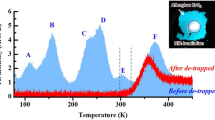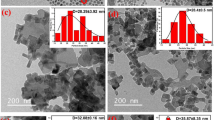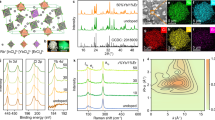Abstract
NATURAL zircons generally luminesce yellow or orange under ultra-violet light1,2. The luminescence is not caused by the tetravalent uranium responsible for the absorption spectra of zircon1,3. Because there have been speculations on the origin of the luminescence, I have studied several zircons which gave a yellow luminescence and I have found that there are at least two main types of luminescent centres in zircon. The varying proportions of these centres give the differences in the colour of the luminescence.
This is a preview of subscription content, access via your institution
Access options
Subscribe to this journal
Receive 51 print issues and online access
$199.00 per year
only $3.90 per issue
Buy this article
- Purchase on SpringerLink
- Instant access to full article PDF
Prices may be subject to local taxes which are calculated during checkout
Similar content being viewed by others
References
Webster, R., in Gems (Butterworths, London, 1962).
Foster, W. R., Amer. Mineral., 33, 724 (1948).
Richman, I., Kisliuk, P., and Wong, E. Y., Phys. Rev., 155, 262 (1967).
DeShazer, L. G., and Dieke, G. H., J. Chem. Phys., 38, 2190 (1963).
Matumura, O., and Koga, H., J. Phys. Soc. Japan., 18, 312 (1963).
Author information
Authors and Affiliations
Rights and permissions
About this article
Cite this article
NICHOLAS, J. Origin of the Luminescence in Natural Zircon. Nature 215, 1476 (1967). https://doi.org/10.1038/2151476a0
Received:
Issue date:
DOI: https://doi.org/10.1038/2151476a0
This article is cited by
-
Helium irradiation study on zircon
Contributions to Mineralogy and Petrology (2011)
-
Photoluminescence of zircon (ZrSiO4) doped with REE3+ (REE = Pr, Sm, Eu, Gd, Dy, Ho, Er)
Physics and Chemistry of Minerals (2010)



